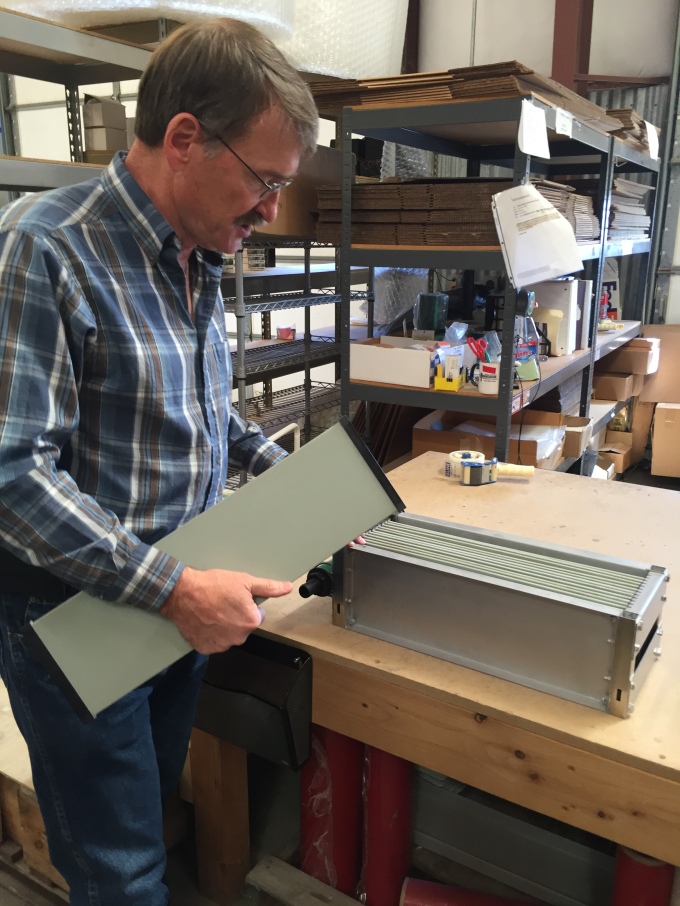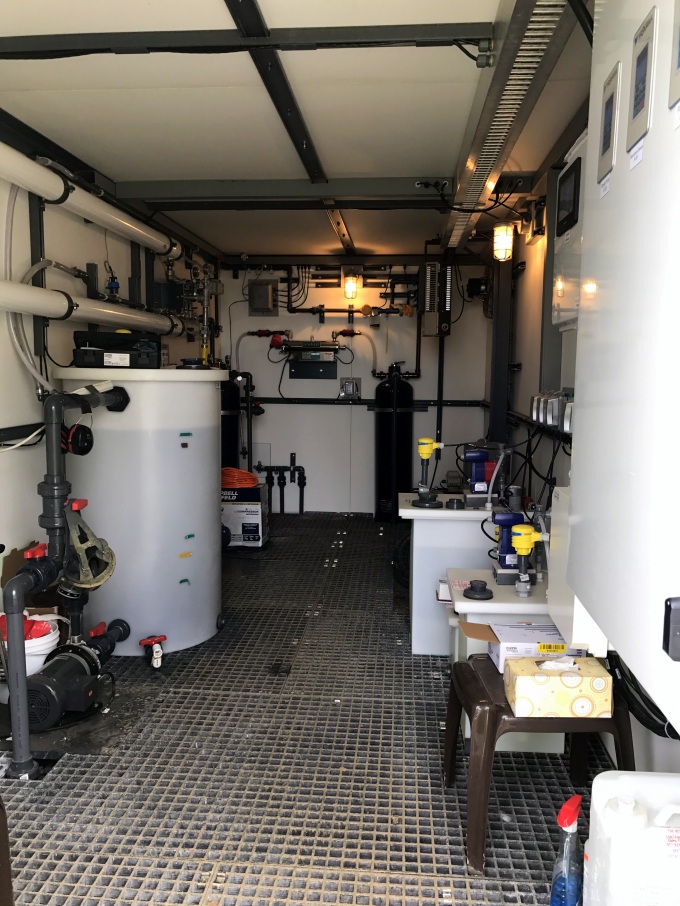A little winery atop a hill in American Canyon is taking a big step forward in developing the technology to re-use wastewater in the winemaking process.
Not long ago, when the California population was lower and water seemed free and easy, it took ten gallons of water to make a gallon of wine. This crazy ratio has decreased by half as simple and common sense conservation measures were implemented by the industry under the pressures of increasing population and decreasing rainfall.
The easy water conservation measures have been taken, but it still takes several gallons of water to make a gallon of wine, and those gallons are either trucked away or are dumped down the drain. The high Carbon load of winery waste places an unsustainable burden on local wastewater plants.
Many wineries have implemented simple digestion facilities where a pond or tanks are used to store the wastewater so microbes can convert the high Carbon content to biomass. The wastewater, with a much reduced Carbon load, is then dumped down the drain where it is less a burden on wastewater treatment plants.
This works well when there is plenty of water available, but Miocene, the first winery in American Canyon, faced a more serious problem. No water. Even as the return of the rains currently has reservoirs bursting at the seams, a shortage of water has become a structural problem in California. Ageing infrastructure groans beneath the weight of increasing population. Water is not just a problem for the Miocene Winery, it is a problem for all of California.
An obvious solution is to re-use the winery wastewater. This might seem easy, after all, the wastewater comes from washing out containers of a beverage we consume with gusto! No nasty there. The problem is the Carbon. Human waste is very low in Carbon.We are very sophisticated and efficient digesters ourselves! When the wastewater sits outside the carefully controlled environments of tanks, barrels and bottles; it goes bad. Just like a bottle of wine left open will go bad. You can’t be washing your tanks with bad wine.
Enter RODI Systems, an innovative company from New Mexico headed by Stan Lueck. RODI has broad experience across the spectrum of industrial wastewater treatment. Petroleum, dye factories, military, desalinization. A recent project in Colorado treats wastewater from an enormous fracking operation to a level where it has been given a permit to discharge directly into the Colorado River.
 Stan in his New Mexico facility demonstrating the tough ceramic membranes that are the first stage in filtering the Miocene wastewater. Bacteria laden water is drawn against stacks of these plates by vacuum. They are currently working so well that zero residual Carbon is getting through them, and the filtrate has exceptional clarity.
Stan in his New Mexico facility demonstrating the tough ceramic membranes that are the first stage in filtering the Miocene wastewater. Bacteria laden water is drawn against stacks of these plates by vacuum. They are currently working so well that zero residual Carbon is getting through them, and the filtrate has exceptional clarity.
RODI had done a winery previously, but they only needed wastewater processed so it could be used for irrigation. Miocene needed wastewater treated to a level you can drink. There were some problems and adjustments for the new application, but the system is now running smoothly and exceeding its design specifications.

The RODI was manufactured in New Mexico and shipped on two trucks to a slab waiting at the Miocene site. The tank is on the right. It is partitioned so that the ceramic membranes do their work in an environment with a higher concentration of the blobs of bacteria we call “floc”. Floc looks like this under the microscope:

The yeasts that make up the bulk of the biology in winery wash water are the little circles. They are mostly dead. A special mix of bacteria for winery waste is provided by Tracy Finnegan of Environmental Leverage, in North Aurora, Illinois. This bacteria consumes the high Carbon content of the wastewater and creates a matrix for the formation of globs of floc. When drawn up against the ceramic membranes, the floc provides a second layer of filtration, and the rapid flow through the accumulated floc turbocharges the bacterial activity.

After passing the ceramic microfilters in the tank, the water comes over to the hi tech part of the RODI in the shipping container. A Unitronics controller oversees a marvel of automatic functions. The pH and dissolved Oxygen in the bioreactor is monitored and automatically adjusted. The ceramic membranes are automatically backwashed every ten minutes. Nutrients are automatically added.
The RODI is designed for remote operation. We routinely “check in” and start, stop, or adjust parameters from wherever we are.
The long tubes on the left are the Reverse Osmisis filters. Reverse osmosis is just a fancy way of saying you force the water through a membrane having holes the size of atoms with a really strong pump. It works because water is a tiny molecule. It is physically impossible for anything but water and a few small ions to get through. The stuff that can’t fit through the filter is rejected, and we use that for irrigation.

This is the finished product. I have drunk a beaker like this. It tastes like the distilled water we use in the lab.
Far sighted officials at the City of American Canyon, particularly Public Works Director Jason Holley, deserve a lot of credit for taking a chance approving the cutting edge technology. Engineer Eddie Livingston was instrumental in gaining the approval. Eddie is working with a small town in the desert using a RODI for converting municipal wastewater to drinking water. Knowing Stan and Eddie, I would drink it!
Gordon Lehman (glehman@sonic.net) is the Miocene project manager and designer.

 Stan in his New Mexico facility demonstrating the tough ceramic membranes that are the first stage in filtering the Miocene wastewater. Bacteria laden water is drawn against stacks of these plates by vacuum. They are currently working so well that zero residual Carbon is getting through them, and the filtrate has exceptional clarity.
Stan in his New Mexico facility demonstrating the tough ceramic membranes that are the first stage in filtering the Miocene wastewater. Bacteria laden water is drawn against stacks of these plates by vacuum. They are currently working so well that zero residual Carbon is getting through them, and the filtrate has exceptional clarity.





